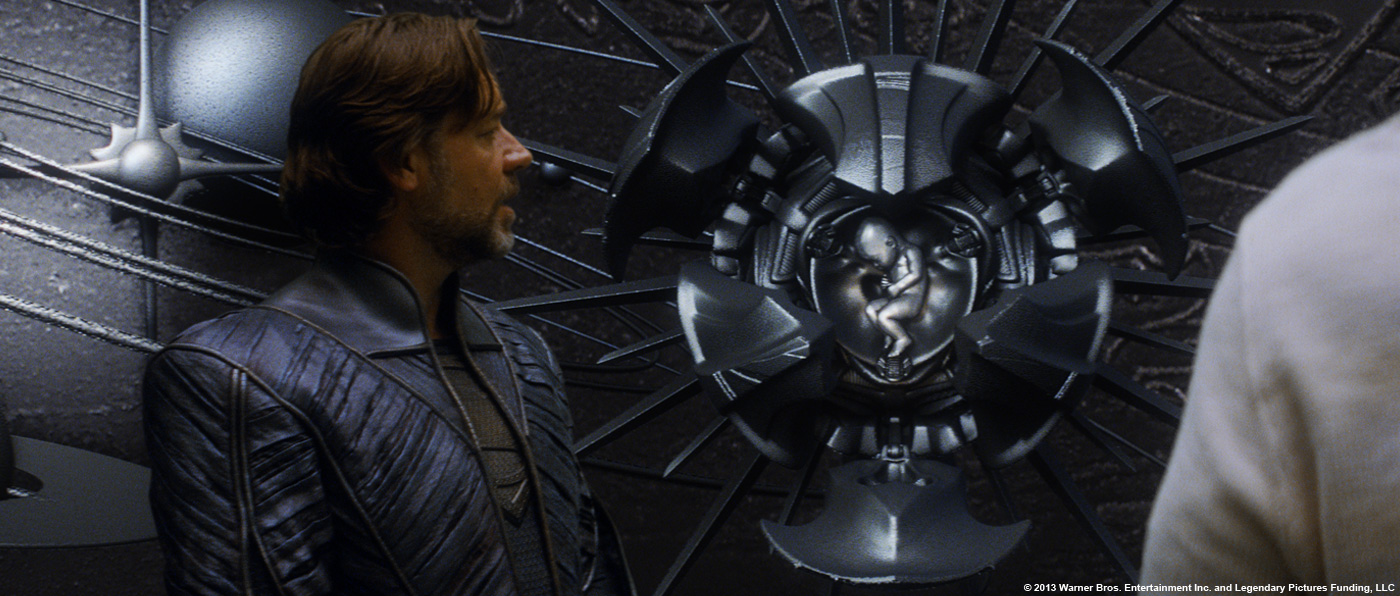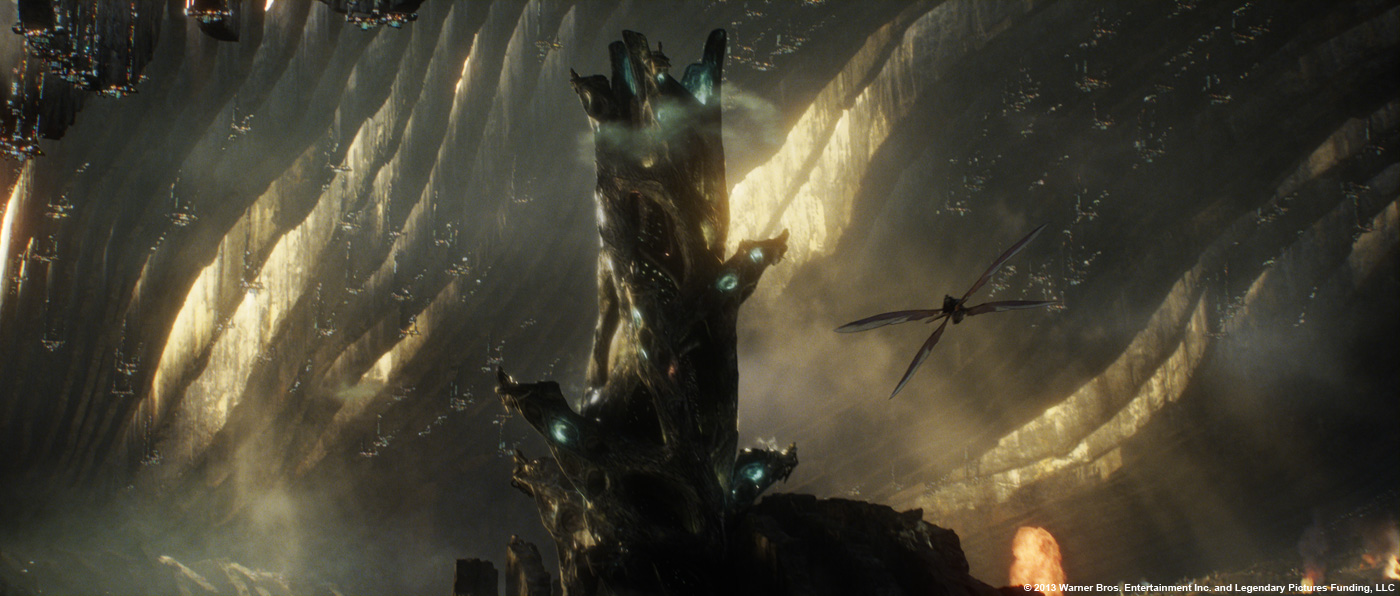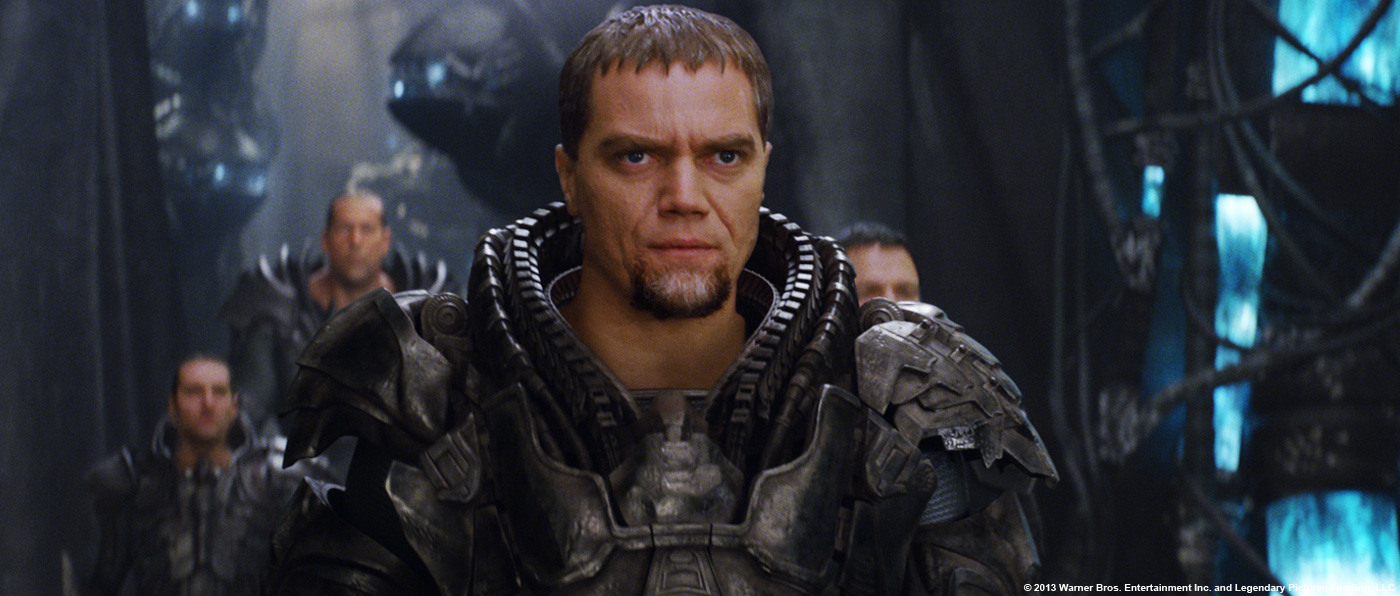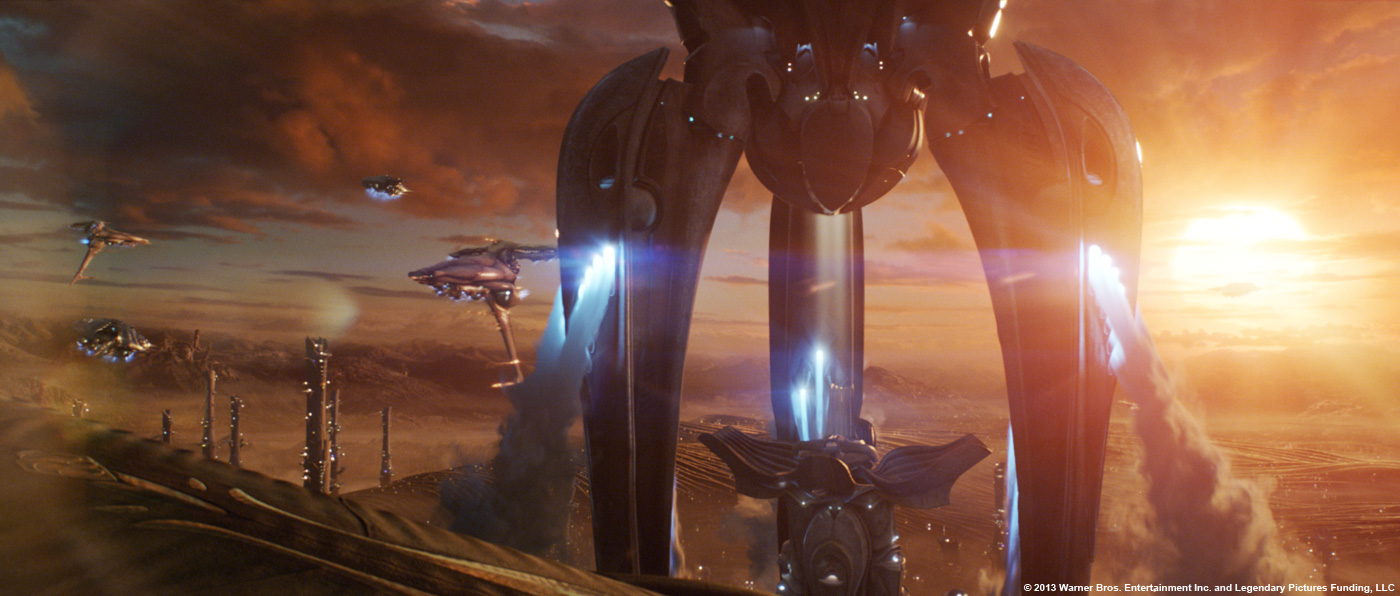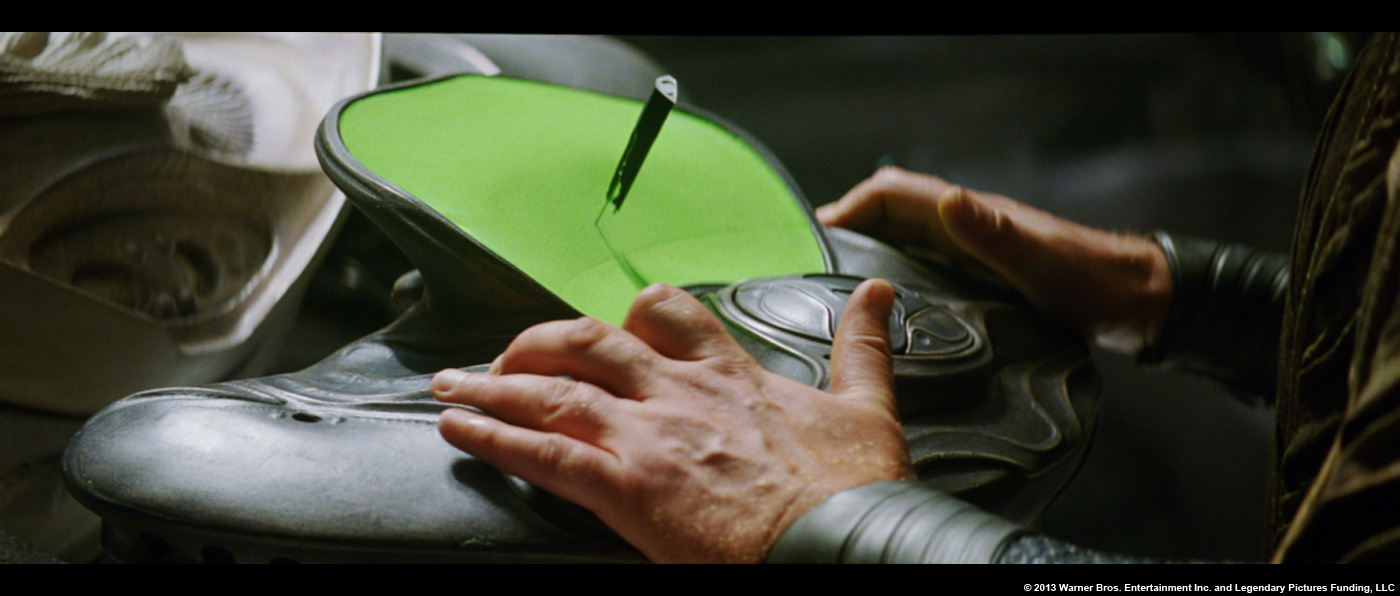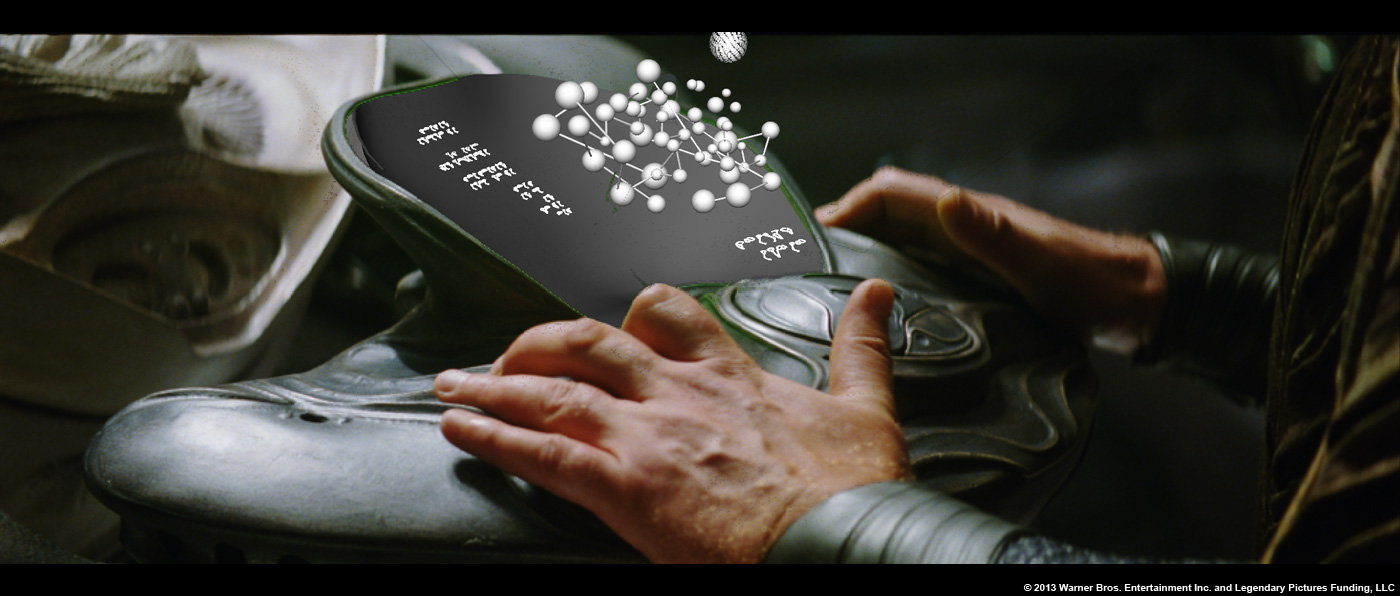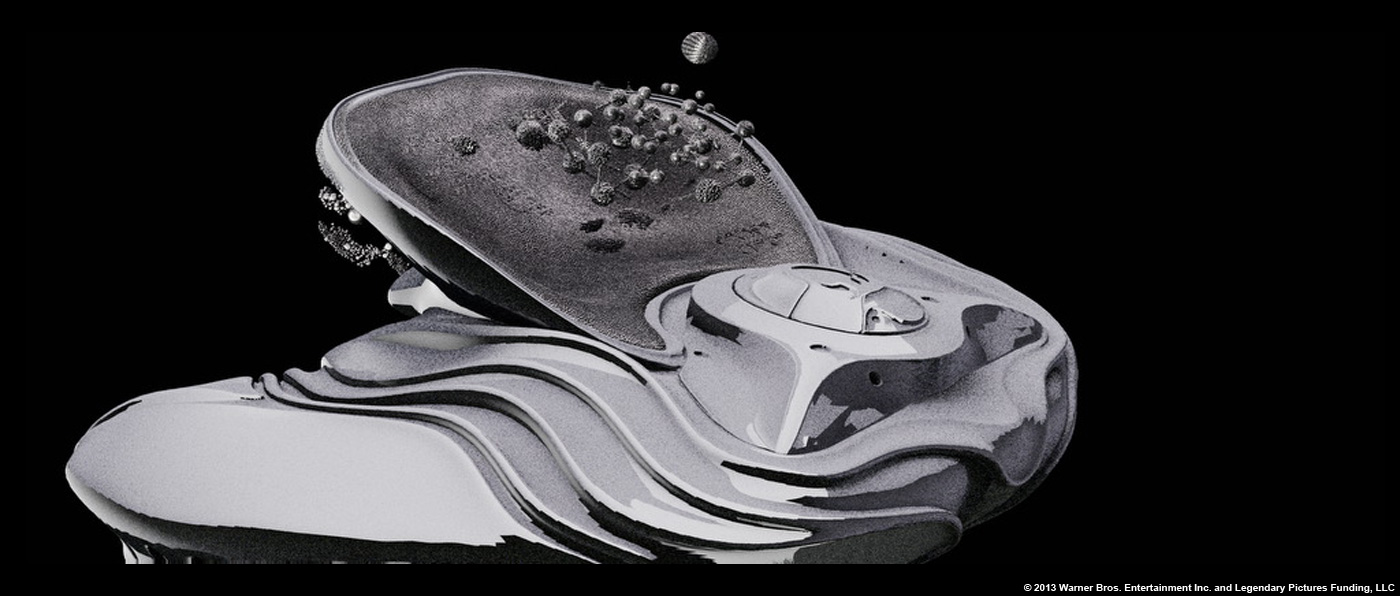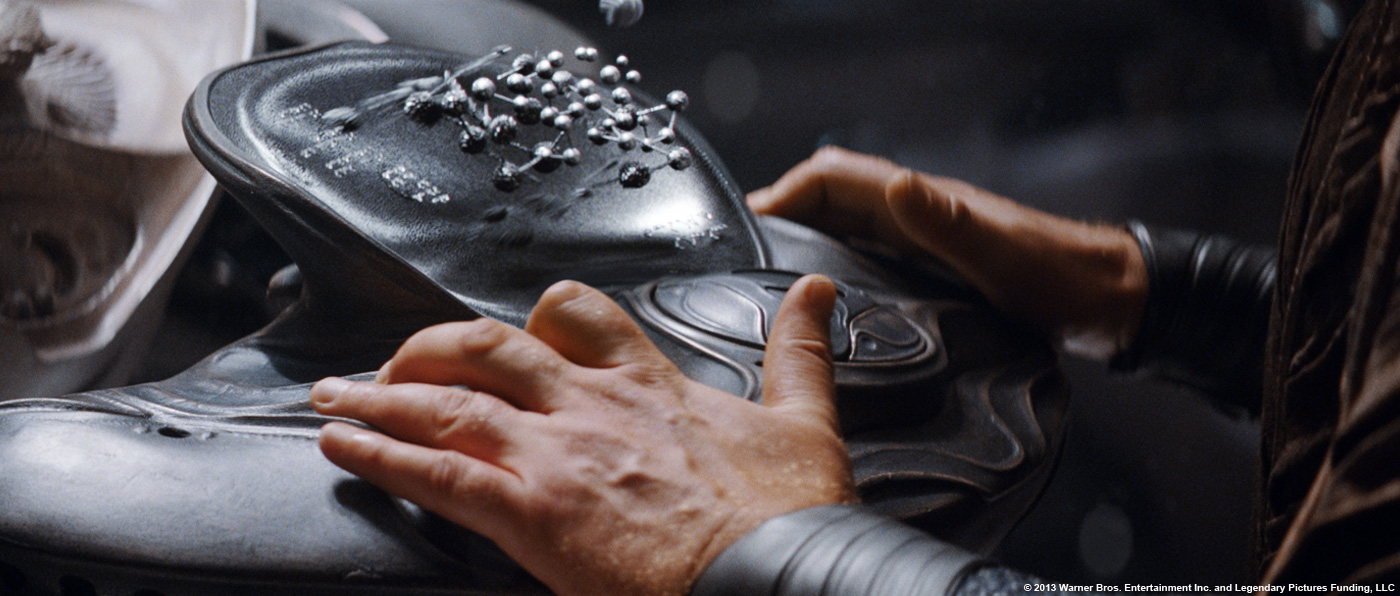Two years ago, Dan Lemmon told us about the work of Weta Digital for RISE OF THE PLANET OF THE APES. It is now back to explain his work on MAN OF STEEL.
How did Weta Digital get involved on this show?
We had worked with DJ before on other projects and we had a lot of respect for Zach Snyder’s and Christopher Nolan’s work. We happened to be working on another big Warner Brothers project at the time, and the timing looked like it would work well to do both films. The filmmakers liked some of our previous work where we’d brought alien worlds to life, so they gave us the opportunity to do the same with Krypton.
How was the collaboration with director Zack Snyder and Production VFX Supervisor John “DJ” Desjardin?
Zach is a great director to work for. He is clear and decisive and very strong visually. We worked from a lot of the concept artwork that his art department, led by Alex McDowell, put together, and it was a great template to get started from. Many of the visual ideas had already been worked out and we just needed to put them in shots and make them look photoreal. Zach and DJ work very closely together and have a very efficient short hand communication. It allows you to move through a lot of shots – getting solid, consistent feedback the whole way through – and end up with shots that look great.
What have you done on this show?
Weta did all of the work on Krypton, nearly all of the work in outer space and orbiting earth, and most of the interiors of the Kryptonian ships.
Krypton is presented as a completely new style. How did you create this planet?
Alex’s artwork and reference research was very helpful to us. His team had done a number of illustrations and rough 3D models that gave us an overall look-and-feel template to follow and a broad-strokes lay of the land. They included references photos of strip mines and quarries to which we added our own references, and we pulled from those real-world images to help ground our fictitious world in reality. Part of the storyline is that the landscape of Krypton has been mined bare leaving great hulking plates of vertical waste rock running across the planet. In Krypton City those vertical plates have been hollowed out to create a massive grillwork of soaring rock arches under which most of the city resides. We went to great lengths to make sure that we had the right kind of rock to build those kinds of structures. I was specifically looking for large, hard, flat rock formations and ended up spending Easter weekend laser scanning basalt cliffs on the South Island of New Zealand with Keith Miller, another VFX Supervisor on the film.
The Genesis Chamber is a huge environment. Can you explain in details about its creation?
Again, we drew heavily from Alex’s artwork. We also pulled from photos of kelp forests and giant aquariums. We wanted the fluid in the Genesis Chamber to feel like it could support life, so we filled it full of particulate vaguely reminiscent of what you might find in amniotic fluid.
How did you manage this huge amount of pods?
We used a level of detail system to control the amount of data we had to deal with, and some of the closest pods were their own hi-res setup.
The Kryptonians are wearing armor. Can you tell us more about their design and creation?
Alex’s team designed the armor and worked with the costume fabricators to create the physical skin-tight « skin suits » that the Kryptonians all wore under their armor. They also built physical versions of the females’ armor. But because of the bulkiness of the mens’ armor and their need to have maximum mobility to fight and perform stunts, the filmmakers decided to do the mens’ armor all digitally. We used faux-cap – a low-footprint video-based pseudo motion capture process – to record the movements of Russell Crowe, Michael Shannon, and the other male Kryptonians, and then based on that data we created armor that stuck to their bodies.
How did you handle the lighting and rendering challenges for the armors?
We lit and rendered the armor using our traditional techniques. We gathered lighting reference from the scene and used that to inform how we lit the digital armor. Because the digital armor was bigger and bulkier than the faux-cap suits the actors were wearing, we had to create shadows from the armor back onto the shoulders and heads of the actors.
How did you create the sequence in which Zod and his warriors are imprisoned?
We used Houdini and a couple different fluid solvers to develop the process for growing the crystals and crawling the dark fluid over the Kryptonian Rebels. The encased Rebels are then floated up into the Black Zero, a massive prison ship, which lifts into orbit around Krypton. It is met in orbit by the Phantom Zone Generator, a satellite that opens a window into the Phantom Zone through which the Black Zero passes. The Phantom Zone Generator had a number of effects, mostly developed in Houdini, that defined the membrane that formed the window into the Phantom Zone and that also tied the Black Zero to the Phantom Zone Generator as it passed into the Phantom Zone.
The destruction of Krypton is impressive. How did you approach this sequence?
Big destruction sequences are always tricky because you want to make things look real and respect the scale of things and the laws of physics, but you also want to exercise a certain level of control and art direct things so that the shots tell the story they need to tell in a legible way. And you also need to make things look cool. So we do something similar to what people would do when they blow up miniatures. We plan where and when we want things to happen in a broad-strokes kind of way. Then we lay explosive forces inside our digital model and we weaken the areas where we want things to break so that when the forces go off, things break where we want them to. After that we run the simulation over and over again, tweaking different things to get the big movements just right, and then we run lots of sub-simulations on top of the big simulation to add detail and refine collisions and further break things apart.
When you see the whole planet blow up from space, that was it’s own separate simulation and set up. We wanted to play visually with the idea that the planet core became unstable and that the planet collapsed around it and then reached a critical point where it reignited and blew up.
There is a scene where Clark is discovering the history of Krypton. How did you create this beautiful sequence?
We created a visual display technology for all of Krypton that we called « liquid geometry ». The idea was that the Kryptonian technology allowed little metallic beads to be suspended in air and take on 3-dimensional shapes by massing together. The Kryptonians used this technology to create displays and interfaces for their machines, space ships, and robots. The History of Krypton sequence featured this display technology being used to help educate Kal-El about where he came from. Figuring out what the images should look like stylistically was a little bit of a challenge. Zack pointed us to Greco-Roman bas-reliefs and a few other references from Soviet propaganda posters and WPA era murals and sculptures. A bas-relief at the Rockefeller Center was particularly helpful in helping us figure out how to make the shapes and figures both bold and stylized while still being legible in one metallic tone.
How did you create the Black Zero ship?
The Black Zero was based on a few illustrations and a rough model we received from Alex McDowell’s department. We used references as divergent as crustaceans and hot rods to help fill in the details. About 1/3rd of the ship’s bridge and some of the other rooms were partial set pieces on a green screen stage – we extended the rest digitally.
Can you tell us more about the aerial battles choreography?
We went through a few iterations with that sequence, and originally it was a bit longer, but the meat of it stayed in the film. The great thing about the aerial battle is that it allows you to see several different places in Krypton. We go from the top of the Council Chamber tower, dive down through the rock ribbons into the belly of the city, stop at the Genesis Chamber, have a look inside, and then come out the other end dodging hostile fire, weaving between giant colliding airships, soar out over the Kryptonian Wilderness, and finally stop at the House of El. It’s really the only look you get at a lot of Krypton, and I think it helps you put everything else that happens there in context.
How did you handle so many elements to animate?
From an animation standpoint, our work was pretty straightforward. We had a few creatures and robots that we had to figure out in terms of how they move and what they can do, but there actually weren’t too many of them. We were usually dealing with less than two dozen animated assets. Of course, when it came to making the screens for all the robots and ships, that’s another story. We developed a whole system for simulating the liquid geo beads on top of basic shape animations that drove the Kryptonian displays.
What was the biggest challenge on this project and how did you achieve it?
The biggest challenge was the History of Krypton sequence, both artistically and technically. We managed to get through it by working hard to nail down the look and the visual beats early on in the show, and then it was a bit of brute force to push all those billions of beads through the pipeline.
Was there a shot or a sequence that prevented you from sleep?
We had a few sleepless nights getting the History of Krypton sequence out the door, but for the most part it wasn’t too bad. We really enjoyed the work and had a good time on the show.
What do you keep from this experience?
It was a real pleasure working with Zack and DJ, and I hope we get the opportunity again.
How long have you worked on this film?
We spent about a year and four months on it.
How many shots have you done?
We completed 607 final shots.
What was the size of your team?
We had about 500 artists who worked on the film over the course of that time.
What is your next project?
I’m currently working on DAWN OF THE PLANET OF THE APES, which is just wrapping up photography in New Orleans right now.
A big thanks for your time.
Thank you!
// WANT TO KNOW MORE?
– Weta Digital: Official website of Weta Digital.
© Vincent Frei – The Art of VFX – 2013


